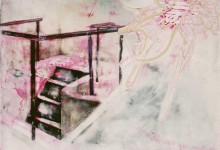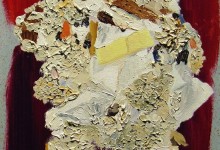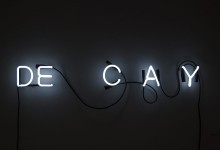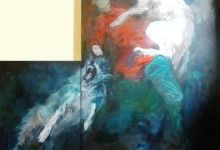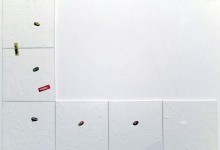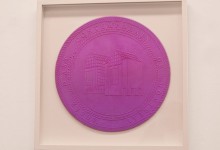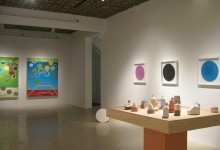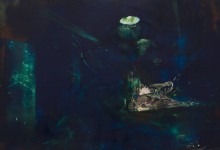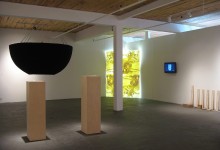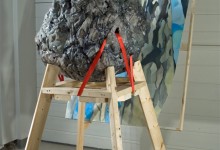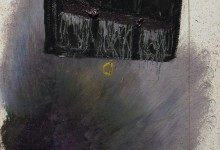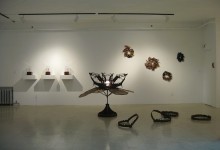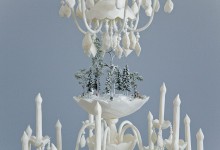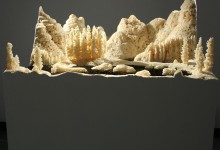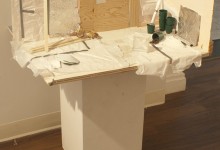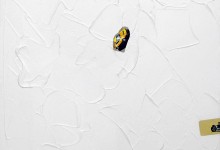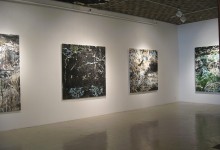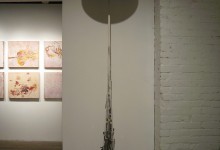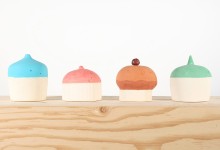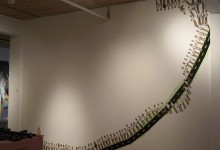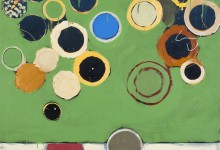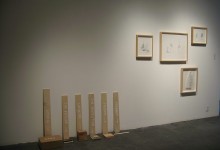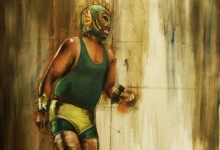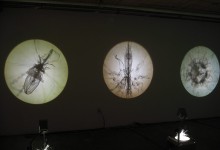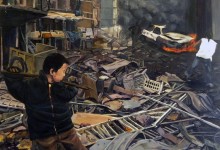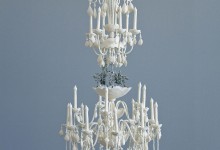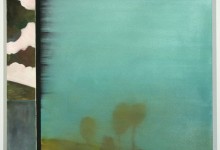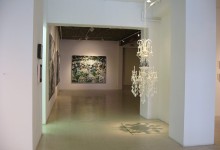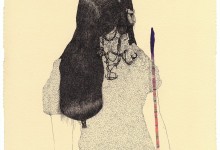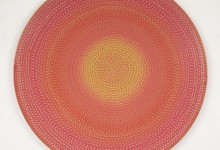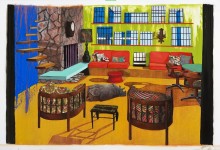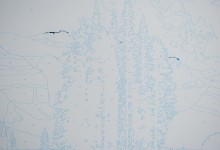Fresh Paint / New Construction: Ian August, Devon Beggs, Caroline Bergeron, Émilie Bernard, Mee Jeong Chae, Robert Clements, Péio Eliceiry, Veronika Horlik, Angie Hostetler, Jessica Karuhanga, Frédérique Laliberté, Laurent Lamarche, Philippe C. Lefebvre, Maude Leonrad-Contant, Logan MacDonald, Jill Martin, Jennifer Norman, Juan Ortiz, Bea Parsons, Shannon Partridge, Guillaume Adjutor Provost, Nicolas Ranellucci, Stephanie Shantz, Ryan Smeeton, Andrew Smith, Mike Spencer, Maca Suazo, Katelyn Tippin, Julie Trudel, René Vandenbrink, Dustin Wenzel, Nicole Raufeisen & Ryan Witt.
Text by Michael Patten
The sixth instalment of Fresh Paint / New Construction brings together works by thirty-two up-and-coming Canadian artists, selected by faculty members from eight universities, in an exhibition that celebrates outstanding talent and potential. This year’s students are from: Concordia University (Montréal, QC), Université Laval (Québec, QC), Nova Scotia College of Art and Design (Halifax, NS), University of Ottawa (Ottawa, ON), Université du Québec à Montréal (Montréal, QC), University of Waterloo (Waterloo, ON), University of Western Ontario (London, ON) and York University (Toronto, ON).
The exhibition features a wide range of approaches to painting and sculpture through traditional and contemporary techniques and materials which reflects the hybrid nature of today’s art. From orange peels to fingernails, the everyday materials used in this year’s presentation have never been more diverse. The following are just a few examples of this variety.
Angie Hostetler (University of Waterloo) demystifies art making with her interactive process piece Orange Elephant. In a series of one-on-one encounters, the artist teaches you how to make an elephant out of an orange peel. The results are then systematically pinned to the wall in a grid formation – leaving the peels to dry and decay in a memento mori of a shared experience.
Robert T. Clements (York University) is also interested in the relationship between art and ritual. He uses fingernails, hair, odour, secretions, and chewing gum, coupled with more traditional materials; to not only challenge our sense of cleanliness and correctitude but to find a delicate balance between compulsion and repulsion. His olfactory works also demand our presence and interaction since they cannot be easily documented.
Maude Leonard-Contant (Concordia University) questions popular taste by recreating representations of nature in mass culture with inexpensive materials like Styrofoam and pencil crayons. The mechanical process of reproduction has made culture more accessible but it also presents us with a standardized view of the world – which Leonard-Constant deconstructs.
René Vandenbrink (University of Western Ontario) has a tendency to acquire and amass objects, textiles, drawings and collage, which are then wrapped and bound together. Exploring the relationship between objects and memory, Vandenbrink takes pleasure in this process of accumulation but at the same time she is aware of the problems associated with compulsive hoarding.
Laurent Lamarche (Université du Québec à Montréal) transforms everyday objects into the extraordinary with his kinetic light sculptures of imagined organisms. Inspired by nanotechnology, these low-tech hybrid forms are made with recycled plastics, projected light and motorized parts – which give them a life of their own.
As demonstrated in the above examples, many artists in the exhibition have been using unorthodox materials in their art making practice. This innovative approach not only transcends convention, but it also blurs the distinction between traditional categories of art and expands our notion of what art can be.




